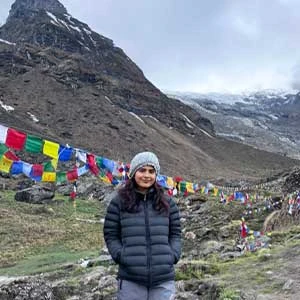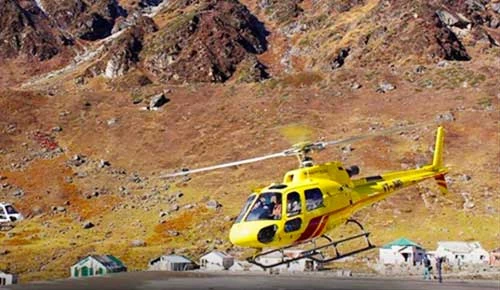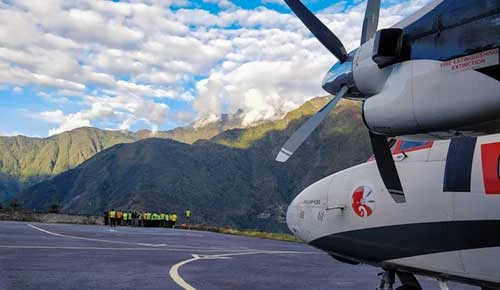Altitude Sickness in Manaslu Region: Causes, Symptoms & Treatment Tips
The Manaslu region is one of the most fascinating place for trekking in Nepal. It presents the stunning views and cultural experiences and the excitement of conquering the high mountain passes. However, the long distances and dramatic elevation changes of this adventure also pose risks, particularly the possibility of altitude sickness during the Manaslu trek. It can happen to anyone, regardless of their age and their level of fitness: it is the effect of less oxygen at high altitudes, and you can experience it whether you are a longtime hiker or a first-time high-altitude hiker.
What makes the Manaslu Circuit Trek so fascinating is that it allows you to experience the lowland villages, River valleys, and your journey that reaches dramatic peaks in the high Himalayas all within just a few days of walking. Trekkers begin their journey in the warm, wooded areas around Soti Khola and gradually ascend to alpine settlements such as Samagaun, Samdo, and Dharamsala, which are at higher altitudes. This fast change in elevation means that the body hardly requires any time to adapt to the lesser oxygen, which in turn causes the likelihood of getting altitude sickness to go up. Even expert hikers may experience this feeling; therefore, part of your preparation for the Manaslu trek involves being aware of the dangers, knowing how to react appropriately, and being ready.
Table of Contents
What Is Altitude Sickness (AMS) and Why Does It Happen?
Altitude sickness, also known as Acute Mountain Sickness (AMS), is a common problem for trekkers in the Himalayas, including Larkya La Pass, which has an altitude of 5,160 meters. Usually, the symptoms in the Manaslu area improve when descending from high altitudes or moving to different environments, such as from the lower elevation at Soti Khola to the higher settlements at Samagaun, Samdo, or Dharamsala. If the disease continues for a long time, AMS can develop into more serious disorders such as High Altitude Pulmonary Edema (HAPE) or High Altitude Cerebral Edema (HACE), which are the most dangerous and death-causing diseases that need an instant cure
Being informed about the causes of Manaslu altitude sickness, the symptoms of this condition, and the measures to prevent and treat this condition is central to a successful trip. It will make you go around and enjoy the views of the snow-capped mountains, steep valleys and ancient monasteries in the region without imperiling your body. In this guide we shall observe the causes of altitude sickness and what initial indications one must look out to, as well as what corrective action one must take during acclimatization or in case of emergency to ensure that the trek route is the Manaslu vacation that will live on in the good memories only.
One of the health issues that is most essential to know when trekking in the Manaslu region is altitude sickness. Medically, it is known as acute mountain sickness (AMS), and it happens as a result of a failure to acclimate to lower oxygen percentage levels at higher altitudes. The Manaslu Circuit Trek has a maximum altitude conquered at the Larkya La Pass (5,160 meters) and is characterized by a lot of altitude increase in a relatively short duration of time. This puts the threat of Manaslu altitude sickness as a very real prospect even for experienced trekkers that are in peak physical condition.
Causes of Acute Mountain Sickness
- Less Oxygen: There is less oxygen as you go higher. Your body must labor more to access the same amount it used to.
- Rapid Ascent: If you increase the altitude too quickly, your body won't have time to adapt, putting you at risk for AMS symptoms.
- Weak Acclimatization: Failure to take rest days or adhere to the high-altitude climb, low-altitude sleep decreases the likelihood.
- Dehydration: At the elevated altitude, your body will lose liquid at a higher rate. Lack of water makes it more difficult to cope.
- Overexertion: Exerting yourself by speeding, loading or hiking long distances without resting strains your body more than normal.
- Sleeping too high too soon: sleeping overnight at a high altitude without leaving a transitional period in place runs the risk of having an illness.
- Individual Susceptibility: Some individuals are inherently more susceptible to altitude, regardless of their age or fitness level.
Altitude Sickness Symptoms
- Nausea or vomiting
- Loss of appetite
- Dizziness or light-headedness
- Difficulty sleeping
- Unusual tiredness or weakness
- Shortness of breath at rest
If ignored, mild AMS can worsen into serious conditions like
HAPE: High Altitude Pulmonary Edema (fluid in lung)
The symptoms of HAPE are:
- Dry cough that can become frothy or produce pink, blood-tinged sputum
- Extreme fatigue and weakness
- Chest tightness or congestion
- Rapid breathing and increased heart rate
- Blue or gray lips and fingernails (low oxygen signs)
HACE: High Altitude Cerebral Edema (swelling in the brain)
The symptoms HACE are:
- Severe, persistent headache
- Loss of coordination (clumsy walking, staggering gait)
- Confusion, irritability, or unusual behavior
- Difficulty speaking or concentrating
- Hallucinations or disorientation
- Loss of consciousness or coma in extreme cases
Key Altitude Points on the Manaslu Trek
Location | Elevation (m) | Risk |
Soti Khola | 710 m | Low risk |
Namrung | 2630 m | Mid-risk start |
lho | 3180 m | Ams is possible. |
Samagaun | 3530 m | Higher risk |
Samdo | 3860 m | AMS common |
Dharmasala | 4470 m | High risk |
Larkya La Pass | 5160 m | Very high risk |
Treatment for Altitude Sickness in the Manaslu Region
The treatment of altitude sickness when trekking in Manaslu is determined by the severity of the symptoms and the speed at which they are identified. The main rule that should be kept in mind is really easy: no matter how much you may want to, you should never choose to ignore the signs. Even Altitude sickness in Manaslu that is mild at first can very quickly turn into severe conditions, thus requiring prompt treatment. The following are the choices and steps to adopt while facing such problems.
Immediate Actions for Mild AMS
If symptoms such as headache, nausea, mild dizziness, or fatigue appear while trekking in the Manaslu region, stop ascending further. Instead:
- Stay at an equal altitude until the symptoms commence to improve. Avoid additional physical activity.
- Be sure to drink plenty of water, 3 or 4 liters per day.
- Consume foods that are easy to digest and that have high energy, such as soups, rice, pasta, or boiled potatoes.
- It is not advisable to use alcohol, caffeine, and sleeping pills because they hinder acclimatization.
- Treat headaches with over-the-counter painkillers (such as ibuprofen or paracetamol), however cautiously, only in case of mild symptoms that are resolving.
When Signs and Symptoms Get Worse
- If rest and hydration don’t help—or if symptoms become moderate—you should:
- Please descend at least 500–1,000 meters immediately. In the Manaslu region, this might mean dropping from Samdo to Samagaun or from Dharamsala to Samdo.
- Administer supplemental oxygen if available through your guide or lodge.
- Consider taking Diamox (acetazolamide) to speed acclimatization. Many trekkers carry this as a precaution, but it should be used under prior medical advice.
Emergency Treatment for Severe AMS, HAPE,OR HACE
- If the trekker shows symptoms such as confusion, inability to walk straight, shortness of breath at rest, or coughing up frothy sputum, the situation is critical.
- Immediate descent is the number one priority—don’t wait until morning.
- Administer high-flow oxygen if available.
- Use Dexamethasone (for HACE) or Nifedipine (for HAPE) if prescribed beforehand.
- Arrange emergency evacuation—in the Manaslu region, helicopter rescue services are available from villages like Samagaun or Samdo if weather permits.
Acclimatization Advice During Manaslu Trekking
Acclimatization is the key to a successful and safe Manaslu trekking. Your body should have some time to slowly acclimatize to the drops in the available oxygen, as the region has trails that take you from low altitudes of about 700 m to the challenging heights of the Larkya La Pass, 5,160 m high. These are all the tips and best practices that will guide you in dealing with the altitude:
- On days above 2,500 meters, do not ascend more than 300 to 500 meters in a single day to reduce the risk of Acute Mountain Sickness (AMS).
- Plan rest days at acclimatization points such as Samagaun (3,530m) and Samdo (3,860m), keeping these days light with small walks or cultural exploration.
- Drink 3 to 4 liters of water per day to counter the dry, cold mountain air, and avoid excessive caffeine or alcohol.
- Follow a high-carbohydrate diet with foods like rice, lentils, potatoes, and soups to provide constant energy and maintain digestibility.
- Monitor your body closely for early signs of altitude sickness such as headaches, nausea, dizziness, or fatigue, and rest if symptoms appear.
- Trek at a comfortable pace to avoid overexertion, use trekking poles to reduce strain, and maintain steady breathing.
- Practice the “Climb High, Sleep Low” principle by hiking to a higher altitude during the day but descending to sleep at a lower camp.
- Use preventive medications like acetazolamide (Diamox) only under medical advice and do not rely solely on medication—proper acclimatization is essential.
Conclusion
Altitude sickness is one of the biggest issues that can hit trekkers in the Manaslu region and once it is addressed through correct preparation and proper acclimatization and planning, it can easily be handled and prevented. Listening to your body, being hydrated and conscious of the symptoms are quite essential and will make your trek extremely safe and pleasant. Make sure to take great care of your health and you will find yourself being able to absorb all that Manaslu has to offer in the form of the beauty of the mountains and the surprise culture. It will ensure that you walk at your pace and safely according to the altitude, which is going to make memorable experiences.
Are you willing to take an adventure to Manaslu under the guidance of experts and complete security? Call Nepal Trek Adventures now to arrange your memorable and secure high-altitude expedition!








